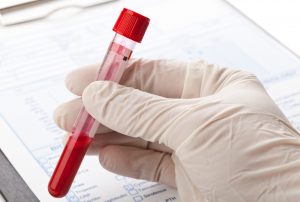 The defendant in an Ohio Vehicular Homicide/Vehicular Assault case filed a motion to suppress the results of his blood test. Blood test results may be suppressed for various reasons. In this case, the defendant argues the blood test did not comply with the requirements of the Ohio Revised Code and the Ohio Administrative Code.
The defendant in an Ohio Vehicular Homicide/Vehicular Assault case filed a motion to suppress the results of his blood test. Blood test results may be suppressed for various reasons. In this case, the defendant argues the blood test did not comply with the requirements of the Ohio Revised Code and the Ohio Administrative Code.
Articles Posted in DUI/OVI blood/breath/urine tests
Law Enforcement Combats Increased Drugged Driving in Ohio
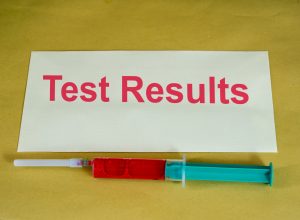 The headline from a recent article read, “Narcotics-based OVIs Rise in Ohio”. A police officer interviewed for the article said he has observed an increase in the number of drug-related OVIs. A representative of the Ohio State Highway Patrol reported fatal marijuana-related crashes rose 52% from 2019 to 2023. To combat this problem, Ohio law enforcement agencies are now using oral fluid testing to help determine intoxication from marijuana and other drugs.
The headline from a recent article read, “Narcotics-based OVIs Rise in Ohio”. A police officer interviewed for the article said he has observed an increase in the number of drug-related OVIs. A representative of the Ohio State Highway Patrol reported fatal marijuana-related crashes rose 52% from 2019 to 2023. To combat this problem, Ohio law enforcement agencies are now using oral fluid testing to help determine intoxication from marijuana and other drugs.
Continue Reading
Hyperglycemia and DUI / OVI in Ohio
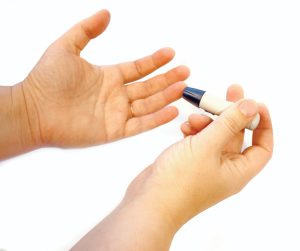 A previous article in this blog discussed the potential impact of hypoglycemia (low blood sugar) on an investigation for DUI (called ‘OVI’ in Ohio). Hypoglycemia is not the only blood sugar condition which may affect an OVI investigation. Hyperglycemia (high blood sugar) may also cause symptoms which overlap with the symptoms of alcohol intoxication. In addition, hyperglycemia may inflate the results of a breath alcohol test.
A previous article in this blog discussed the potential impact of hypoglycemia (low blood sugar) on an investigation for DUI (called ‘OVI’ in Ohio). Hypoglycemia is not the only blood sugar condition which may affect an OVI investigation. Hyperglycemia (high blood sugar) may also cause symptoms which overlap with the symptoms of alcohol intoxication. In addition, hyperglycemia may inflate the results of a breath alcohol test.
Marijuana Sales Underway in Ohio: Drivers Beware
 A few days ago, legal recreational marijuana sales began in Ohio. At some dispensaries, there has been an overwhelming response, with customers standing in line to buy marijuana. As sales can only be made to people who are 21 and older, we can presume most of the recreational marijuana users are also car drivers. Those drivers should be aware of Ohio’s laws regarding marijuana and DUI (called ‘OVI’ in Ohio).
A few days ago, legal recreational marijuana sales began in Ohio. At some dispensaries, there has been an overwhelming response, with customers standing in line to buy marijuana. As sales can only be made to people who are 21 and older, we can presume most of the recreational marijuana users are also car drivers. Those drivers should be aware of Ohio’s laws regarding marijuana and DUI (called ‘OVI’ in Ohio).
U.S. Supreme Court Addresses Right to Confront Crime Lab Analyst
 In DUI cases (called ‘OVI’ in Ohio), a defendant’s blood or urine sample may be tested by a crime lab to determine the concentration of alcohol and/or drugs in the sample. In court, a lab analyst testifies regarding the blood or urine testing and the results of the test. But what if the analyst testifying is not the analyst who conducted the test? The recent case of Smith v. Arizona addressed whether this violates the defendant’s right to confront witnesses.
In DUI cases (called ‘OVI’ in Ohio), a defendant’s blood or urine sample may be tested by a crime lab to determine the concentration of alcohol and/or drugs in the sample. In court, a lab analyst testifies regarding the blood or urine testing and the results of the test. But what if the analyst testifying is not the analyst who conducted the test? The recent case of Smith v. Arizona addressed whether this violates the defendant’s right to confront witnesses.
Can a Driver Arrested for DUI/OVI Revoke Consent to a Blood Test?

When an officer arrests a driver for DUI (called ‘OVI’ in Ohio), the officer typically requests that the driver consent to a blood, breath, or urine test. However, a statute in the Ohio Revised Code (section 4511.191) says a driver arrested for OVI implicitly consents to those tests. Can a driver arrested for OVI revoke that consent? This question has not been directly addressed in Ohio but was recently answered by the Supreme Court of Colorado.
When Are Officers Permitted to Administer Breath Alcohol Tests?
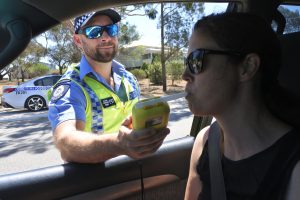 The Ontario Provincial Police (OPP) recently implemented a policy of administering a breath alcohol test to every driver stopped for a traffic offense. Even if the stop is for a minor violation, and even if the officer has no suspicion the driver is under the influence, the driver must submit to a breath test. Refusing the test is a criminal offense. Could this happen in Ohio?
The Ontario Provincial Police (OPP) recently implemented a policy of administering a breath alcohol test to every driver stopped for a traffic offense. Even if the stop is for a minor violation, and even if the officer has no suspicion the driver is under the influence, the driver must submit to a breath test. Refusing the test is a criminal offense. Could this happen in Ohio?
Brush Your Teeth…and Measure Your Alcohol Level
 You probably have heard of the Breathalyzer, but probably not the Brushalyser. Now you have. The Brushalyser is at the intersection of oral hygiene and traffic safety: it’s a toothbrush which doubles as a portable breath alcohol test. But should you rely on your toothbrush to determine whether it’s safe for you to drive?
You probably have heard of the Breathalyzer, but probably not the Brushalyser. Now you have. The Brushalyser is at the intersection of oral hygiene and traffic safety: it’s a toothbrush which doubles as a portable breath alcohol test. But should you rely on your toothbrush to determine whether it’s safe for you to drive?
Some Allegations of Breath Test Refusals Are Unfair
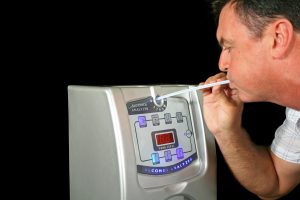 Ohio’s DUI laws (called ‘OVI’ in Ohio) criminalize driving with a prohibited breath alcohol concentration. To determine whether a person has a prohibited breath alcohol concentration, law enforcement officers use breath-testing machines. If a person refuses a breath test, there are consequences. However, differences in height, age, gender, and smoking habits make some people physically unable to provide a sufficient breath sample. As a result, some people are accused of refusing a breath test when they didn’t.
Ohio’s DUI laws (called ‘OVI’ in Ohio) criminalize driving with a prohibited breath alcohol concentration. To determine whether a person has a prohibited breath alcohol concentration, law enforcement officers use breath-testing machines. If a person refuses a breath test, there are consequences. However, differences in height, age, gender, and smoking habits make some people physically unable to provide a sufficient breath sample. As a result, some people are accused of refusing a breath test when they didn’t.
Driving School Tests Skills of Drunk Drivers
 The Chikushino Police Department has a program in which driving instructors test the driving skills of volunteers who are under the influence of alcohol. According to a CNN article, testing impaired drivers is part of a drunk driving awareness campaign. In Ohio, we do not use drunk driving exams to determine if drivers are impaired by alcohol or drugs. Instead, we use field sobriety tests and blood/breath/urine tests. Those tests are circumstantial evidence that a person was operating a vehicle under the influence.
The Chikushino Police Department has a program in which driving instructors test the driving skills of volunteers who are under the influence of alcohol. According to a CNN article, testing impaired drivers is part of a drunk driving awareness campaign. In Ohio, we do not use drunk driving exams to determine if drivers are impaired by alcohol or drugs. Instead, we use field sobriety tests and blood/breath/urine tests. Those tests are circumstantial evidence that a person was operating a vehicle under the influence.
 Columbus OVI/DUI Attorney Blog
Columbus OVI/DUI Attorney Blog

